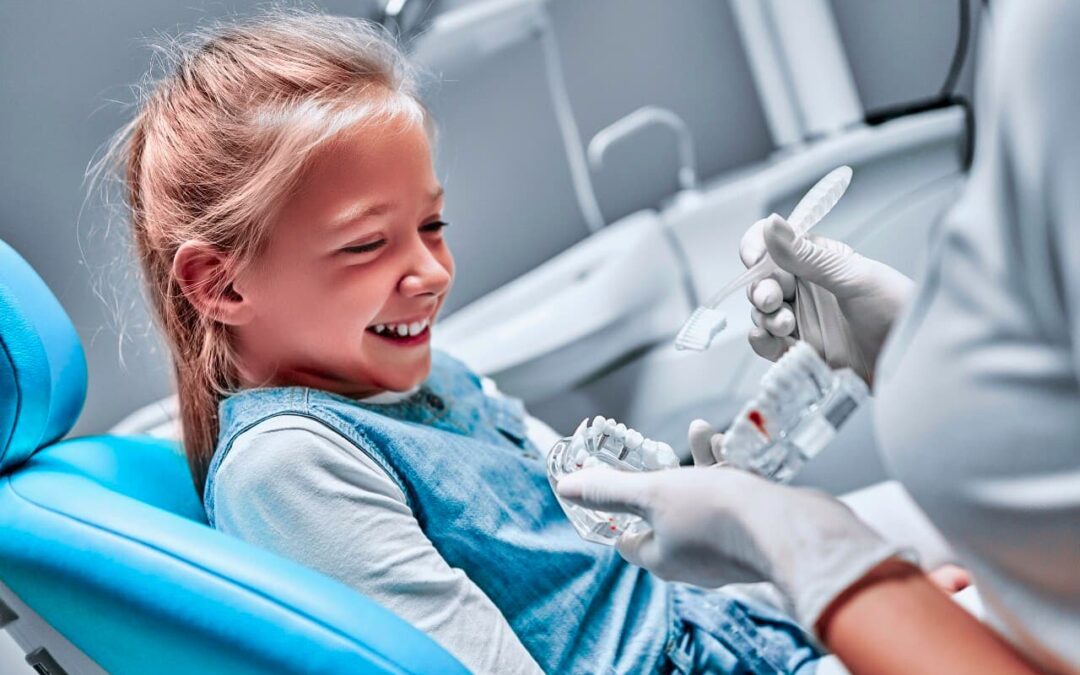February is the month of: candied chalky hearts, gummy jelly beans, valentines, romance, the disappearing and reappearing 29th (leap year), and children’s dental health awareness. How’s that for a bit of irony? In the month of the holiday that literally only celebrates love through chocolate and candy is also the month that as a nation, we take the time to focus our awareness and attention on the dental health of our youthful generations.
Children’s dental health awareness started as merely a day of observance, the 8th of February, by the American Dental Association (ADA) in 1949, and in 1981 it was lengthened to the entire month! Maybe as Valentine’s Day candy furor intensified over the years the entire month was decided upon as necessary to counter the cavity consequences?
Regardless of the motivation behind the month, as pediatric dentists in South Davis and the surrounding area, we love this topic. Our vision is to see happy and healthy smiles in all the children of our communities. That no child be prevented from receiving dental care due to fear, anxiety, cost, accessibility, or convenience. Knowing that, surely you aren’t surprised.
Every year, the ADA announces a theme for the month of awareness, and this year the theme is: ‘Sealants Make Sense’.
Sealants Make Sense
Dental sealants are an important part of children’s dental health that are a preventative measure taken primarily for children. Perhaps in part because they cannot be applied to any teeth that already have fillings, but also due to the fact that statistically cavities are still very common in children.
Current data from the Centers for Disease Control and Prevention (CDC) has the following statistics regarding cavities and kids:
-
About 1 of 5 (20%) children aged 5 to 11 years have at least one untreated decayed tooth.1
-
1 of 7 (13%) adolescents aged 12 to 19 years have at least one untreated decayed tooth.1
-
Children aged 5 to 19 years from low-income families are twice as likely (25%) to have cavities, compared with children from higher-income households (11%).1
So, why do sealants make sense? On the grounds that cavities are more statistically likely to occur in your children’s teeth than yours (you are a routine tooth brushing and flossing adult, right?) sealants are an effective protection that is applied directly to the enamel of the tooth by covering and sealing to the tooth thereby preventing any lingering food or bacteria from causing decay of the enamel. The molars are the most frequent beneficiaries for sealants: owing to the pits, grooves, and fissures along the top that conduct the arduous and integral work of chewing and grinding up our food.
Those pits, grooves, and fissures are favorite hiding spots for bacteria, plaque, and bits of food. While it’s absolutely important that you teach your little ones the correct brushing technique, through the age of six, you really should also take a turn as well. Nevertheless, dental sealants are typically covered by most (although not all, sadly) dental insurance and dental health plans as a result of evidence based studies and clinical trials that have shown a staggering effect on reducing the risk of cavities.
Science Says Sealants Make Sense
Let’s explore a little further the aforementioned staggering impact dental sealants have on dental health. What does the science say about sealants?
In 2016, a clinical review of 23 scientific studies of the topic titled, ‘Sealants for preventing and arresting pit-and-fissure occlusal caries in primary and permanent molars
A systematic review of randomized controlled trials—a report of the American Dental Association and the American Academy of Pediatric Dentistry‘, was published in the Journal of the American Dental Association. The review examined the effectiveness of dental sealants in children, adolescents, and adults and came to the following conclusions:
-
“Participants who received sealants had a reduced risk of developing cavities in permanent molars by 80% when compared with those who did not receive sealants.
-
When compared with fluoride varnishes, the authors found that sealants reduced the incidence of cavities after 7 or more years of follow-up.
-
The evidence base supporting sealants suggests that they are effective and safe to prevent or arrest the progression of cavities compared with a control without sealants or fluoride varnishes.”
Sealants Are Easy to Apply and a Pain Free Procedure
Once you’ve decided sealants make sense for your kids, it’s a quick process. First, we clean the chosen teeth thoroughly. Once the teeth are cleaner than ever, a gel is applied that will abrade the surface slightly to allow the sealant to make a truly tenacious bond. The sealant itself we apply in liquid form and then utilize blue light activation to harden it which completes the procedure.
Suggestions for Dental Health Awareness Activities with Your Kids
We’ve said it before, yet we truly must emphasize how the attitude of the parent towards dental health directly impacts the attitude of the child. When you apply time, energy, and focus to prioritizing dental health not only for your kids but yourself as well, they will notice. You don’t have to be a dentist or a school employee to take up the mantel of sharing dental health awareness with your kids and/or community.
The ADA has created several printable PDF documents of coloring pages and word games that you can print for your kids: find them by clicking here. Share them with your daycare, preschool, church, and community center.
Make an Appointment for Dental Sealants
Don’t wait until your next scheduled cleaning to do dental sealants for your kids. If they have molars, baby or permanent, then they have pits and grooves tempting those bacteria and food bits. We apply dental sealants to both baby and permanent teeth because proper care for your child’s baby teeth is just as important as it is for their permanent teeth. Give us a call today and we’ll make an appointment that works for your family.


Recent Comments